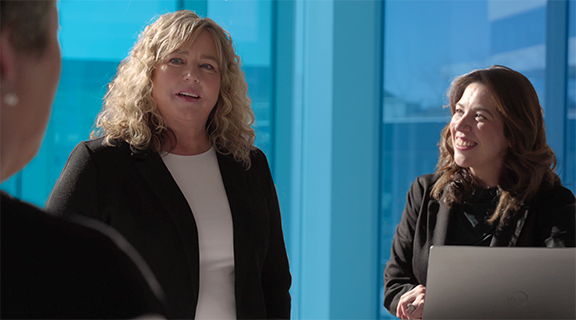Share this
by Laura Richards on October 6, 2022
Co-tenancy clauses exist to mitigate risk for retailers. While landlords sometimes struggle with co-tenancy clauses, tenants are ensuring that these clever clauses are becoming standard in the retail industry and leading to more companies searching for lease administration software.
What Exactly is Co-Tenancy
The larger venues – a department store or well-known name – are called anchors. The smaller stores are referred to as satellites. Satellite stores are the ones that have co-tenancy clauses with their property owners.
When an anchor goes belly-up or, just spit balling here, a global pandemic changes how the entire world shops, a co-tenancy clause ensures that the satellites are protected. If occupancy within the entire venue drops, tenants can potentially be provided with some relief.
The overall goal is a mutually beneficial ecosystem in which the shopper reaps the rewards. A grocery store is a great example of an anchor/satellite system. Picking up groceries becomes easier and more pleasant when, at the same location, you can also drop off a package, pick up your dry cleaning and grab a coffee pleasant when, at the same location, you can also drop off a package, pick up your dry cleaning and grab coffee all without getting back in your car.
Core Parts of a Co-Tenancy Clause
Co-tenancy clauses are unavoidably bogged down with heavy, complex legal jargon. But any layman can grasp the three core elements of these clauses.
1. ReliefAs mentioned earlier, the goal of the co-tenancy clause is relief for the satellite retailers in the event something happens to the anchors. This part of the clause or lease will spell out specifically what the tenant is entitled to when the tenant threshold dips to a lower percentage than the retailer and property owner agreed upon. Relief usually leads to lowered rent for the tenant and/or allows the tenant to end their lease early.
2. Tenant ThresholdTenant threshold is a technical term that specifies the total tenant occupancy below which another tenant can invoke the clause. This can be defined in square footage, store occupancy, or a myriad of other data points.
3. Cure Period
The cure period is a win for the property owners. It is the amount of time that the property owners are given to restore occupancy to a number above the tenant threshold. This prevents retailers from immediately jumping ship when their anchor is pulled up.
What are Some Co-Tenancy Problems?
For enterprise-level companies, co-tenancy clauses can be a problem just because there are so many of them when you have hundreds of retail spaces leased. A lack of consistency between a company’s properties can lead to confusion and disjointed lease execution.
A problem that can be found in the fine print is that co-tenancy provisions in a lease can be terminated if the tenant does not satisfy certain conditions presented by the landlord. A tenant definitely cannot be in default. They may even have to show proof of sales to their property owner.
Perks of Co-Tenancy Clauses
It’s no secret that co-tenancy clauses come in handy for tenants. A well-written clause can potentially protect the tenant in multiple situations. One example would be the loss of an anchor store.
Another would be the right to leave or pay less rent when common area maintenance (CAM) is lacking, not as promised or severely damaged.
It’s also possible that a force majeure clause could come into play, allowing a tenant to leave the property and their contractual agreement earlier than planned due to an unforeseen circumstance affecting their tenancy.
Some co-tenancy clauses can determine what other types of businesses move in nearby. A bakery may not want a coffee shop serving pastries right next door. A bank likely won’t want to set up next to a tattoo parlor. With a well-written, well-executed co-tenancy clause, retailers have a lot more say when it comes to their neighbors and neighborhoods.
If you utilize market data and analytics software, you can access detailed information on other tenants in the building which could allow you to better negotiate deals and find out what kind of neighbors you might have.
Once again, it’s all about risk. Co-tenancy clauses protect the risk-adverse by ensuring that they are not responsible for the business decisions or business errors made by their retail neighbors or property owners.
There is also the simple fact that by teaming up, the property owner and all the satellite retailers can mutually benefit from the traffic and income that come with a profitable anchor store.
Where Does Software Come into Play
If your company isn’t using a powerful lease management software solution and is not doing the most market data research available, you could miss huge opportunities with your co-tenancy clauses.
An enterprise-sized organization relying simply on personnel to identify the nuances of hundreds or thousands of clauses is not practical or sustainable. Sophisticated lease administration software can extract specific clauses from your leases, no matter how many there are, and sort out the data that is truly relevant to you.
You can find out important dates, intel about neighboring stores and markets, and know exactly how much your rent should change when a co-tenancy clause is activated.
These clauses are vital to negotiations when it comes to getting your company into commercial real estate and retail space. Don’t go to the negotiation table empty-handed. A smart software solution can get you all the information you need to dominate a lease or renewal negotiation.
When you know more, you can save more. If you’d like to learn more about what an asset smart software can be to your business, reach out to CoStar Real Estate Manager today.
Share this
- Lease Accounting Software (89)
- ASC 842 (83)
- Accounting Teams (52)
- Lease Administration Software (26)
- Retail Tenants (16)
- Commercial Real Estate (14)
- Lease Management (12)
- Real Estate Teams (9)
- ESG (8)
- Market Data and Analytics (8)
- Success Stories (8)
- News and Media Coverage (5)
- Transaction Management Software (2)
- frs 102 (2)
- Customer Success (1)
- Office Tenants (1)
- July 2025 (1)
- June 2025 (4)
- May 2025 (2)
- April 2025 (2)
- March 2025 (6)
- February 2025 (3)
- January 2025 (4)
- December 2024 (1)
- October 2024 (4)
- September 2024 (2)
- August 2024 (5)
- July 2024 (3)
- June 2024 (3)
- May 2024 (4)
- April 2024 (1)
- February 2024 (1)
- December 2023 (4)
- November 2023 (6)
- October 2023 (4)
- September 2023 (2)
- August 2023 (2)
- July 2023 (3)
- May 2023 (2)
- March 2023 (1)
- February 2023 (3)
- January 2023 (1)
- December 2022 (3)
- November 2022 (4)
- October 2022 (4)
- September 2022 (1)
- August 2022 (4)
- June 2022 (1)
- May 2022 (4)
- April 2022 (8)
- March 2022 (3)
- February 2022 (1)
- January 2022 (2)
- November 2021 (2)
- October 2021 (2)
- September 2021 (3)
- August 2021 (15)
- July 2021 (3)
- June 2021 (1)
- May 2021 (1)
- April 2021 (3)
- March 2021 (1)
- January 2021 (1)
- December 2020 (3)
- November 2020 (1)
- October 2020 (2)
- September 2020 (2)
- August 2020 (3)
- July 2020 (2)
- June 2020 (3)
- May 2020 (1)
- April 2020 (1)
- March 2020 (1)
- February 2020 (1)
- December 2019 (1)
- October 2019 (1)
- September 2019 (2)
- August 2019 (3)
- July 2019 (2)
- April 2019 (69)
- October 2018 (1)
- August 2018 (1)
- July 2018 (1)
- June 2018 (1)
- May 2018 (1)
- April 2018 (2)
- March 2018 (3)
- February 2018 (2)
- December 2017 (1)
- August 2017 (3)
- June 2017 (2)
- May 2017 (2)
- April 2017 (1)
- March 2017 (2)
- January 2017 (2)
- November 2016 (2)
- July 2016 (1)
- June 2016 (1)
- July 2015 (1)
- March 2015 (1)
- June 2014 (1)
- April 2014 (11)
- October 2011 (1)
You May Also Like
These Related Stories

How Rentokil Terminix Chose Their Lease Administration Software

Choosing the Best Lease Administration Software for Abstraction



